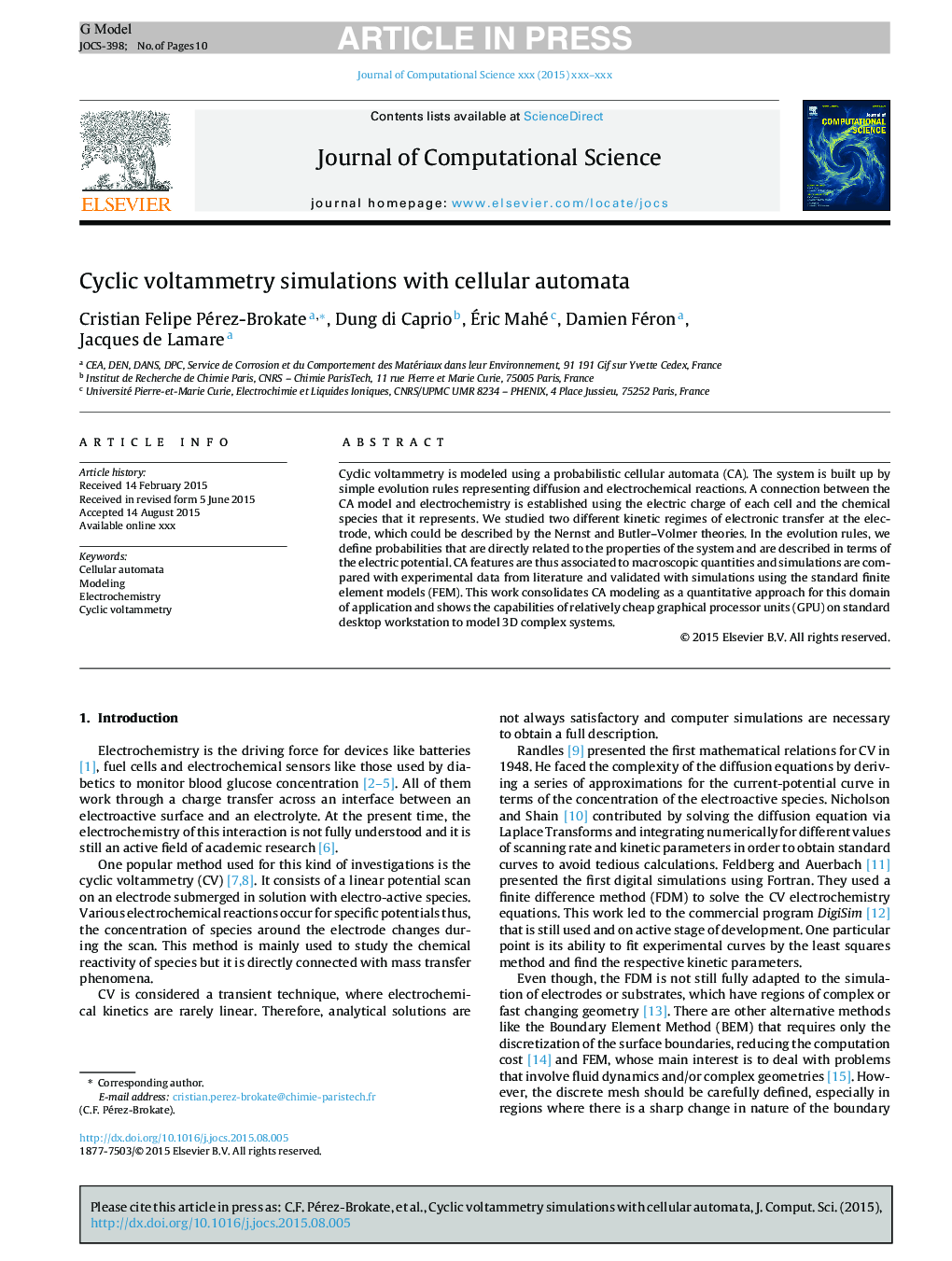| Article ID | Journal | Published Year | Pages | File Type |
|---|---|---|---|---|
| 6874583 | Journal of Computational Science | 2015 | 10 Pages |
Abstract
Cyclic voltammetry is modeled using a probabilistic cellular automata (CA). The system is built up by simple evolution rules representing diffusion and electrochemical reactions. A connection between the CA model and electrochemistry is established using the electric charge of each cell and the chemical species that it represents. We studied two different kinetic regimes of electronic transfer at the electrode, which could be described by the Nernst and Butler-Volmer theories. In the evolution rules, we define probabilities that are directly related to the properties of the system and are described in terms of the electric potential. CA features are thus associated to macroscopic quantities and simulations are compared with experimental data from literature and validated with simulations using the standard finite element models (FEM). This work consolidates CA modeling as a quantitative approach for this domain of application and shows the capabilities of relatively cheap graphical processor units (GPU) on standard desktop workstation to model 3D complex systems.
Related Topics
Physical Sciences and Engineering
Computer Science
Computational Theory and Mathematics
Authors
Cristian Felipe Pérez-Brokate, Dung di Caprio, Ãric Mahé, Damien Féron, Jacques de Lamare,
